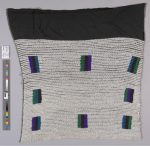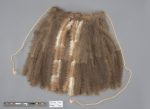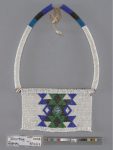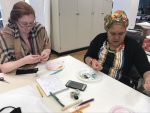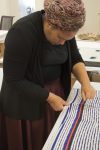By Kathryn Brugioni Gabrielli, Assistant Conservator
As an objects conservator and an emerging professional, I have had limited experience thinking beyond the theoretical when it comes to the care, preservation, and treatment of textiles. As such, I was especially excited at the prospect of my first project during my fellowship at the VMFA. After my orientation, I was introduced to Hlengiwe Dube, an esteemed beadwork expert, historian, artist, and collector from KwaZulu-Natal, South Africa. This was an orientation in itself: to the project, to the material, and to the force that was Hlengi. Over the next three weeks, I had the privilege of examining components of ensembles belonging to both a married female and a married male, collected by VMFA in 2013.
Zulu beadwork is a world-famous and distinctive African-art form, which has a long history in South Africa. Before the mid-eighteenth century most beading material was made of wood, shell, stones, metal, or seeds. Although glass beads had been introduced to the area much earlier by the Venetians, via Portuguese traders, they were rare, very highly prized as demonstration of the wearer’s wealth, and at times a market that was monopolized by the kings of the Zulu Empire. They also became a form of currency used by foreign traders and a means of exerting political influence. Bead culture eventually proliferated, with glass materials being manufactured in Bohemia and in China. Today “seed” beads of various colors dominate, and plastic beads have come into limited use for making certain types of objects.
Each ensemble to be surveyed at the VMFA, comprised of approximately fifteen pieces each, were manufactured between the 1920’s and the 1960’s. They include bead- and fur-embellished aprons, beaded “love letter,” anklets and wristbands, a female headdress as well as other adornments associated with courtship in the Zulu culture. The superficial similarities of these pieces—to an untrained eye—reflect the adaptability of this tradition, which has undergone, and continues to undergo, change. Each object carries with it a rich history that was documented in part over weeks of interviews and consultations with Hlengi. My favorite thing to learn about was the way subtle variation of bead color could modify the message the beaded motifs were encoding, and well as learning about Zulu social mores and marriage ceremonies through Hlengi’s descriptions and stories.
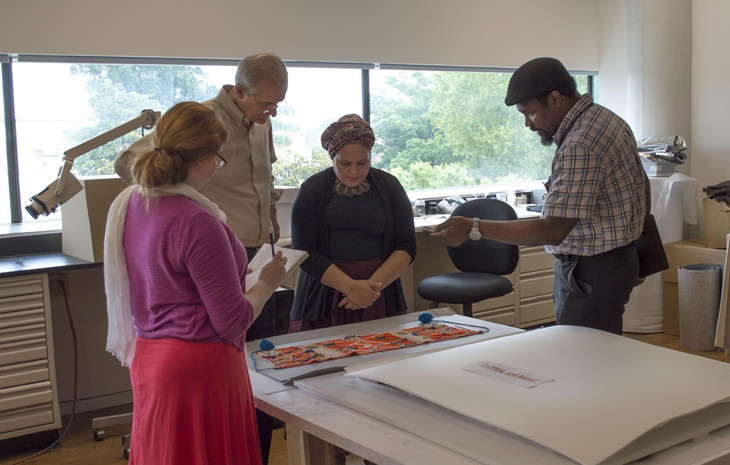
Kathryn Gabrielli, Richard Woodward, Hlengiwe Dube, and Endy Ezeluomba (left to right) consulting over a man’s beaded apron (2013.195c, obverse). VMFA. May 31, 2017.
As work over the ensembles progressed, and Hlengi described the implications of the colors, the motifs, and the relative positioning of the colored beads on the pieces, the question of treatment had to be addressed. Working in collaboration with my colleague Casey Mallinckrodt, Assistant Objects Conservator with the Mellon Conservation Initiative in African Art, the different stitch types were documented. This was done with diagrams, written descriptions, and hands-on experience. Hlengi worked with us to address stability concerns and demonstrated how to make traditional repairs non-invasively with conservation-appropriate materials. The difficulty of beading well—with appropriate tension and respecting the rules of the pattern and stitch type—definitely deepened my appreciation of the art form!
Conservation is interdisciplinary in nature, and in this case, consultation with our curatorial colleagues as well as with a member of the Zulu community was vital to addressing issues of preservation, conservation, interpretation, and display.
